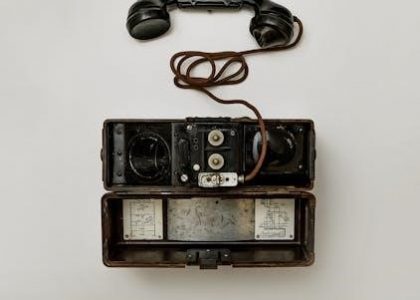Understanding the Atone‚ Attune‚ Attach Model
The Atone‚ Attune‚ Attach model‚ a framework for affair recovery‚ guides couples through three phases⁚ atonement for the betrayal‚ attunement to rebuild emotional connection‚ and attachment to restore intimacy and trust. This structured approach‚ detailed in a comprehensive PDF manual‚ offers a roadmap for healing and rebuilding a relationship after infidelity;
The Three Phases of Affair Recovery
The Gottman Method’s “Atone‚ Attune‚ Attach” model provides a structured approach to healing after infidelity‚ dividing the recovery process into three distinct phases. The first‚ Atonement‚ focuses on the unfaithful partner taking full responsibility for their actions‚ expressing genuine remorse‚ and ceasing all contact with the affair partner. This phase demands honesty‚ accountability‚ and a commitment to repairing the damage done. Next‚ Attunement emphasizes rebuilding emotional connection and understanding. Partners must learn to communicate effectively‚ address underlying issues‚ and foster empathy and compassion. This involves actively listening‚ validating feelings‚ and working towards mutual understanding. Finally‚ Attachment aims to re-establish intimacy and trust. This phase involves reconnecting physically and emotionally‚ rebuilding sexual intimacy‚ and creating a secure and safe environment for the relationship to thrive. The process requires patience‚ commitment‚ and a willingness from both partners to actively participate in the healing process.
Atonement⁚ Taking Responsibility for Actions
The initial phase‚ Atonement‚ is crucial for initiating the healing process after an affair. It necessitates the unfaithful partner fully accepting responsibility for their actions without making excuses or blaming their partner. Genuine remorse must be demonstrated through consistent expressions of regret and a sincere commitment to change. This phase involves a complete cessation of contact with the affair partner and transparency regarding all aspects of the infidelity. The betrayed partner’s feelings of anger‚ hurt‚ and betrayal must be acknowledged and validated without defensiveness from the offending partner. Successful atonement requires patience‚ empathy‚ and a willingness to endure the consequences of one’s actions. The depth and duration of this phase depend on the severity of the betrayal and the individuals involved. Open communication and a willingness to actively participate in the healing process are critical components of effective atonement.
Attunement⁚ Rebuilding Emotional Connection
Following atonement‚ the Attunement phase focuses on rebuilding the emotional connection shattered by the infidelity. This requires both partners to actively engage in understanding each other’s emotional experiences. The betrayed partner needs space to process their hurt and anger‚ while the offending partner must demonstrate empathy and patience. Effective communication and active listening are paramount. This phase often involves addressing underlying issues that contributed to the affair‚ such as unmet needs or communication breakdowns. Repairing the emotional bond involves shared vulnerability‚ increased intimacy‚ and a renewed focus on understanding each other’s perspectives and emotional needs. The goal is to foster a sense of safety and security within the relationship‚ allowing for the rebuilding of trust and fostering a stronger emotional connection than before the affair.
Attachment⁚ Reconnecting Intimacy and Trust
The final phase‚ Attachment‚ centers on rebuilding intimacy and trust. This involves a gradual process of reconnecting on both an emotional and physical level. Open communication about fears and insecurities is vital. The couple may explore new ways to express intimacy‚ potentially seeking professional guidance to navigate sensitive issues. Rebuilding trust requires consistent effort‚ transparency‚ and accountability from the partner who was unfaithful. This phase emphasizes creating shared experiences and strengthening the bond through mutual support and understanding. The goal is to establish a secure attachment style‚ characterized by trust‚ reliability‚ and emotional safety. The journey may involve addressing past traumas or insecurities to build a stronger foundation for the future. The PDF manual provides tools and exercises to navigate this delicate stage of recovery.
The Gottman Method and Affair Recovery
The Gottman Method‚ renowned for its research-based approach‚ incorporates the Atone‚ Attune‚ Attach model for effective affair recovery. Its tools and techniques‚ detailed in the PDF‚ help couples navigate each phase‚ fostering trust and rebuilding their relationship.
Applying the Model in Couples Therapy
In couples therapy‚ the Atone‚ Attune‚ Attach model provides a structured framework for navigating the complexities of affair recovery. Therapists utilize the model’s three phases—atonement‚ attunement‚ and attachment—to guide couples through the process of rebuilding trust and intimacy. The model emphasizes open communication‚ emotional processing‚ and the development of healthy relationship patterns. The accompanying PDF manual serves as a valuable resource‚ offering therapists practical tools and techniques for each phase‚ facilitating effective interventions tailored to each couple’s unique needs. This structured approach ensures a comprehensive and compassionate therapeutic journey‚ fostering healing and strengthening the couple’s bond. The therapist acts as a guide‚ providing support and facilitating meaningful dialogue and understanding between partners. This collaborative approach empowers couples to take ownership of their healing journey and work together towards a stronger‚ more resilient relationship. The process is not solely focused on repairing the damage caused by the affair; it also aims to address underlying issues that may have contributed to the infidelity and promote long-term relationship health.
Tools and Techniques for Each Phase
The Atone‚ Attune‚ Attach model‚ detailed in the accompanying PDF‚ offers specific tools and techniques for each phase of affair recovery. In the Atonement phase‚ exercises focus on taking full responsibility and expressing genuine remorse. This might involve writing letters of apology‚ engaging in reflective journaling‚ or participating in guided discussions aimed at understanding the impact of the betrayal. The Attunement phase utilizes techniques to rebuild emotional connection‚ such as active listening exercises‚ empathy-building practices‚ and identifying shared values. These aim to foster understanding and create a safe space for vulnerable communication. Finally‚ the Attachment phase focuses on rebuilding intimacy and trust. Tools here may include exercises designed to enhance physical intimacy‚ improve communication skills‚ and establish clear boundaries. The PDF manual provides detailed instructions and examples for each technique‚ offering a practical guide for couples navigating this challenging journey. The techniques are adaptable to individual needs‚ ensuring a personalized approach to healing and rebuilding the relationship.
The Role of the Therapist in the Process
A therapist utilizing the Atone‚ Attune‚ Attach model‚ as detailed in the accompanying PDF‚ plays a crucial role in guiding couples through each phase. They provide a neutral and supportive environment‚ facilitating open communication and helping partners navigate difficult emotions. The therapist helps the betraying partner understand the depth of their actions and develop strategies for genuine atonement‚ ensuring accountability and remorse. They guide the betrayed partner in processing their pain and anger while fostering a sense of safety and validation. The therapist assists in building attunement by teaching effective communication skills‚ helping partners understand each other’s emotional needs‚ and fostering empathy. In the attachment phase‚ the therapist helps the couple rebuild intimacy and trust through guided exercises and strategies for conflict resolution. The PDF serves as a valuable resource‚ providing the therapist with structured interventions and assessments to monitor progress and tailor the therapy to the couple’s specific needs. Ultimately‚ the therapist’s role is to empower the couple to take ownership of their healing journey‚ fostering self-awareness and strengthening their bond.
Practical Applications and Resources
The accompanying PDF manual provides practical tools and guidance for implementing the Atone‚ Attune‚ Attach model‚ supporting couples in their journey toward healing and rebuilding trust after infidelity.
Utilizing the PDF Manual for Guidance
The comprehensive PDF manual accompanying the Atone‚ Attune‚ Attach model serves as an invaluable resource for couples navigating the complexities of affair recovery. It provides detailed explanations of each phase—atonement‚ attunement‚ and attachment—offering practical strategies and exercises to facilitate progress. The manual’s structured approach helps couples understand the process‚ fostering a sense of direction and hope. It includes assessments to gauge progress‚ interventions to address specific challenges‚ and references to support further learning. This resource empowers couples to actively participate in their healing journey‚ providing a framework for open communication and collaborative problem-solving. The step-by-step guidance facilitates a deeper understanding of the emotional and relational dynamics involved in rebuilding trust after infidelity‚ equipping couples with the tools they need to navigate the difficult terrain of betrayal and emerge stronger.
Establishing Boundaries and Transparency
Rebuilding trust after infidelity necessitates establishing clear boundaries and fostering transparency. This crucial step involves open communication about expectations and limits within the relationship. Both partners need to actively participate in defining these boundaries‚ ensuring they are mutually agreeable and realistic. Transparency demands honesty and openness in all aspects of daily life‚ including social interactions and online activities. This may involve sharing passwords‚ providing regular updates on whereabouts‚ and maintaining open communication channels. It’s vital to avoid secrecy‚ as it breeds suspicion and undermines the rebuilding process. The goal is to create a safe and secure environment where both partners feel comfortable and respected. This shared commitment to transparency and clearly defined boundaries forms the bedrock of a renewed‚ healthier relationship built on trust and mutual respect.
Long-Term Strategies for Maintaining Trust
Sustaining trust after infidelity requires ongoing commitment and effort from both partners. Regular check-ins and open communication are essential to address any emerging concerns or anxieties. Continuing therapy or counseling can provide valuable support and guidance in navigating challenges and preventing future issues. Developing healthy conflict-resolution skills is crucial for managing disagreements constructively and avoiding destructive patterns. Prioritizing quality time together‚ engaging in shared activities‚ and fostering mutual understanding strengthens the bond and reinforces commitment. Regular acts of kindness‚ appreciation‚ and affection nurture the relationship and build a stronger foundation of trust. It’s also important to address any underlying issues that contributed to the infidelity‚ such as communication problems or unmet needs‚ through individual or couples therapy. By consistently working together and proactively addressing potential problems‚ couples can build a lasting and trustworthy relationship.
Beyond the Model⁚ Addressing Underlying Issues
The “Atone‚ Attune‚ Attach” model‚ while helpful‚ doesn’t address all issues. Trauma‚ communication problems‚ and individual insecurities often need separate attention for complete healing and lasting trust.
Trauma and its Impact on Relationships
Infidelity can be deeply traumatic‚ triggering past wounds and insecurities. The betrayed partner may experience intense emotional pain‚ feelings of betrayal‚ and a loss of trust‚ potentially leading to PTSD symptoms like anxiety‚ flashbacks‚ and difficulty sleeping. For the unfaithful partner‚ guilt and shame can be overwhelming. Past trauma‚ such as childhood abuse or neglect‚ can significantly impact a person’s ability to form and maintain healthy relationships. Understanding these underlying traumas is crucial. Addressing these issues‚ possibly through individual therapy‚ is essential for effective healing and rebuilding trust within the relationship. Failure to address these deep-seated emotional wounds can hinder progress and lead to relationship instability‚ even after the initial stages of the Atone‚ Attune‚ and Attach model have been completed. The healing process must acknowledge and address the unique challenges each partner faces.
Individual Therapy and Self-Reflection
Individual therapy plays a vital role in affair recovery‚ providing a safe space for self-reflection and processing complex emotions. For the betrayed partner‚ therapy can help manage trauma‚ rebuild self-esteem‚ and develop coping mechanisms for dealing with the aftermath of infidelity. The unfaithful partner can benefit from exploring the underlying reasons for their actions‚ addressing any personal issues contributing to the affair‚ and developing healthier relationship patterns. Self-reflection is crucial for both partners. Journaling‚ mindfulness practices‚ and introspection can facilitate deeper understanding of individual needs and behaviors‚ fostering personal growth and improving communication skills. This individual work complements couples therapy‚ strengthening the foundation for successful relationship rebuilding. Addressing personal issues independently empowers individuals to contribute more effectively to the couple’s healing process. The goal is to foster self-awareness and personal growth for a more resilient and healthy relationship.
The Importance of Secure Attachment Patterns
Secure attachment is foundational to healthy relationships and crucial for successful affair recovery. Individuals with secure attachment styles tend to have greater emotional regulation‚ empathy‚ and communication skills‚ all vital for navigating the challenges of infidelity. Insecure attachment patterns‚ such as anxious-preoccupied or dismissive-avoidant styles‚ can significantly hinder the healing process. Anxious individuals may struggle with excessive worry and jealousy‚ while avoidant individuals may resist emotional intimacy and self-reflection. The Atone‚ Attune‚ Attach model emphasizes building secure attachment through improved communication‚ emotional responsiveness‚ and increased trust. Therapy can help individuals identify and address their insecure attachment patterns‚ fostering healthier relationship dynamics. Cultivating secure attachment is not merely about fixing a relationship; it’s about fostering emotional maturity and building stronger‚ more resilient connections in all aspects of life. A secure base allows for greater vulnerability and openness‚ essential elements in overcoming betrayal and rebuilding a thriving partnership.




